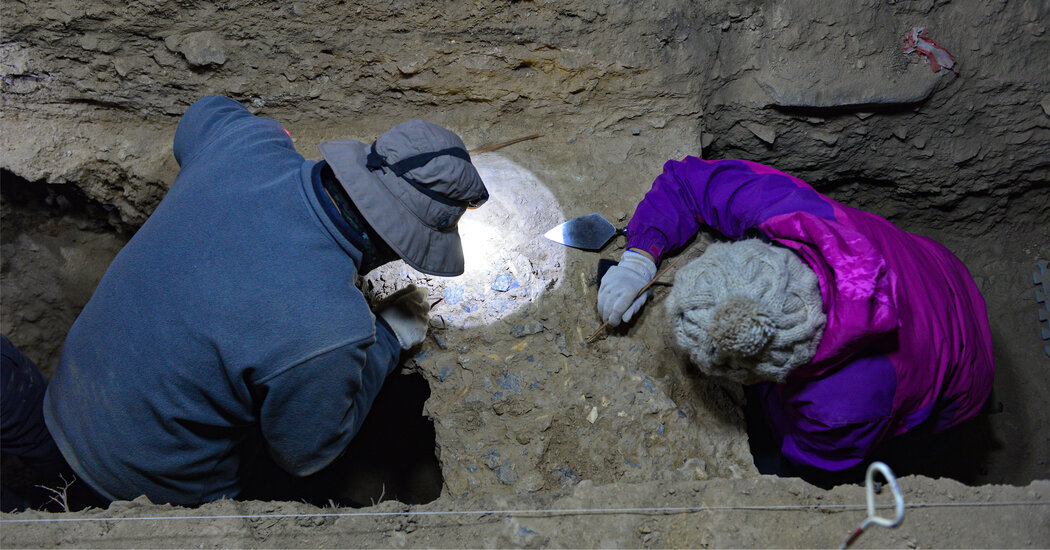A trove of animal bone fragments from a cave on the Tibetan plateau reveals how Denisovans thrived in a harsh climate for over 100,000 years.
The Baishiya Karst Cave is not an easy place to call home. It is nestled on a steep rocky slope on the Tibetan Plateau, 10,700 feet up, where the oxygen is thin and the climate cold and dry.
But a series of expeditions to the cave in recent years have demonstrated that it was home to one of the most mysterious branches of humanity: a Neanderthal-like group of people called the Denisovans.
Since 2010, scientists have painted a murky picture of Denisovans (pronounced De-NEE-so-vans) based on just three teeth, a few bone fragments and traces of DNA. Mystery has shrouded much of their existence, especially their behavior.
But researchers who have dug a few small holes into the Baishyia Karst Cave have uncovered a wealth of clues about Denisovans. In a paper published Wednesday, they reported that for more than 100,000 years, Denisovans hunted or scavenged a wide range of animals on the Tibetan plateau, from blue sheep to snow leopards and even golden eagles. Denisovans not only ate the animals, but probably skinned their hides for clothing to stay warm in freezing temperatures.
The first evidence of Denisovans turned up some 1,400 miles northwest of that spot, in the Denisova Cave in Siberia. DNA from a single tooth and a pinkie bone showed that the group belonged to a lineage distinct from modern humans and Neanderthals.
Millions of living people carry some Denisovan genes, geneticists later discovered, indicating that modern humans interbred with them, along with Neanderthals, before the two groups disappeared.
